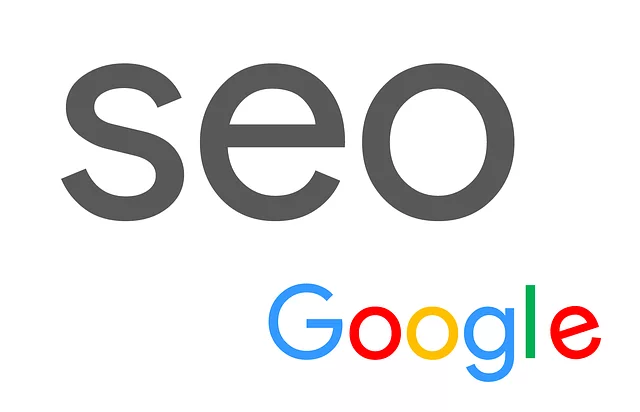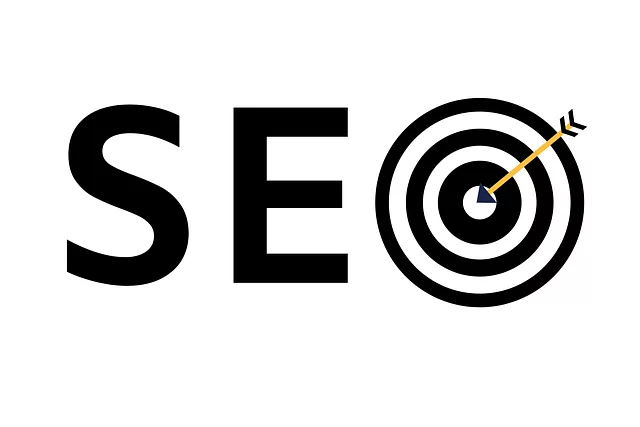User Experience (UX) is a powerful driver of Search Engine Optimization (SEO) success. By focusing on intuitive navigation, mobile responsiveness, fast loading times, clear CTAs, and compelling content, websites can enhance user satisfaction, encourage deeper engagement, and improve key metrics like session duration and bounce rates. This directly impacts SEO rankings by signaling search engines of high-quality content and user interest. Additionally, visual elements, personalization, and continuous user feedback integration further bolster UX and SEO performance. Regular analysis of UX success metrics using tools like Google Analytics is crucial for making data-driven improvements that drive higher rankings and foster user loyalty.
In today’s digital landscape, understanding user experience (UX) is not just a best practice—it’s a necessity for improving SEO rankings. A well-crafted UX isn’t just about aesthetics; it drives engagement, lowers bounce rates, and increases time spent on site—all signals that search engines use to determine ranking. This article delves into the intricate relationship between UX and SEO, offering actionable insights on metrics, content, navigation, mobile optimization, visual elements, personalization, user feedback, and measurement to help you optimize your site for better search rankings.
Understanding User Experience (UX) and Its Impact on SEO

User Experience (UX) is a critical aspect of website design that often gets overlooked in favor of more technical or content-focused SEO strategies. At its core, UX is about creating an intuitive and enjoyable experience for visitors navigating your site. This involves everything from easy-to-use interfaces and clear call-to-actions to fast loading times and mobile responsiveness. When users find a website easy to use and engaging, they’re more likely to explore deeper, interact with content, and ultimately convert, which has a direct impact on search engine rankings.
Search engines like Google have evolved beyond simply counting keywords to understand user intent and behavior. They reward sites that provide a superior UX because it indicates high-quality, relevant content. By improving UX, you can also boost key metrics such as time spent on site, bounce rate, and pages per session, all of which are signals search engines use to determine a website’s value. This holistic approach to SEO not only helps in achieving higher search engine rankings but also fosters long-term user loyalty and engagement.
Key UX Metrics to Optimize for Better Search Rankings

To improve SEO rankings, understanding and optimizing key User Experience (UX) metrics are essential. Metrics like bounce rate and session duration offer valuable insights into how users interact with your website. A low bounce rate indicates that visitors are engaging with your content, while longer session durations suggest high interest and satisfaction. By focusing on these metrics, you can refine your site’s design and content to better meet user expectations.
Additionally, pages per session and conversion rates are crucial UX metrics for enhancing search rankings. Increasing the number of pages visited during a single session shows that users are exploring your site extensively, which can positively impact SEO. Conversion rate optimization ensures that visitors take desired actions, such as making purchases or signing up for newsletters, thereby demonstrating the effectiveness of your website’s user experience in driving meaningful results and improving search engine visibility.
Creating Compelling and Engaging Content for Users

Creating compelling content is an art that goes beyond mere words on a page. In the digital landscape, where users have countless options at their fingertips, engaging content acts as the magnet drawing them in and keeping them captivated. To improve SEO rankings, focus on delivering value through well-researched, informative, and entertaining material. Incorporate diverse media formats like images, videos, and infographics to break down complex ideas into digestible chunks, enhancing user experience and encouraging longer interactions.
User engagement is a key driver of search engine algorithms. When visitors actively interact with your content, clicking, sharing, or commenting, it signals to search engines that your site offers valuable insights. Optimize your content for both users and search engines by understanding their intent behind queries and creating relevant, high-quality material that satisfies their needs. This balance ensures not only improved SEO rankings but also fosters a loyal audience eager for more.
Website Navigation: Designing for Seamless User Journeys

Effective website navigation is a cornerstone in enhancing user experience and, consequently, improving SEO rankings. Designing for seamless user journeys means creating intuitive structures that guide visitors effortlessly through your site. This involves clear labeling, consistent placement of navigation elements, and a hierarchical organization that reflects the content’s logic. A well-designed navigation system not only helps users find what they’re looking for but also signals to search engines the relevance and interconnection of pages.
By optimizing these aspects, you streamline the user journey, reduce bounce rates, and encourage longer sessions—all factors that positively impact your site’s performance in search engine results. Think of it as creating a map within your website, making it easier for both users and search algorithms to navigate and discover valuable content.
Mobile Optimization: Ensuring a Fluid UX Across Devices

In today’s mobile-first world, optimizing your website for various devices is no longer an option but a necessity to improve SEO rankings. Mobile optimization ensures that users across smartphones, tablets, and other portable gadgets have a seamless and fluid user experience (UX) when interacting with digital content. This involves ensuring responsive web design, fast loading times, and easy navigation, regardless of screen size or resolution.
By prioritizing mobile UX, you’re not only catering to the majority of internet users but also providing search engines like Google with positive signals that your website is user-friendly and trustworthy. This can lead to better visibility in mobile search results, higher click-through rates, and ultimately, improved SEO rankings for your online presence.
The Role of Visual Elements in Enhancing User Experience

In today’s digital landscape, visual elements play a pivotal role in enhancing user experience (UX) and, consequently, boosting search engine optimization (SEO) rankings. From eye-catching graphics to high-quality images and intuitive video content, these components capture users’ attention, facilitate understanding, and encourage engagement. By incorporating visually appealing assets strategically throughout a website or application, developers create an immersive environment that keeps visitors interested and involved, leading to lower bounce rates and longer session durations – key factors that search engines consider when determining rankings.
Moreover, visual elements serve as powerful cues for both users and search engine algorithms. Well-designed visuals can communicate information quickly, simplifying complex concepts and navigation paths. This not only improves usability but also signals to search engines that the content is valuable and relevant, further strengthening the site’s authority and improving its SEO rankings over time. Ultimately, a balanced blend of compelling visuals and high-quality content forms the backbone of a successful UX strategy, driving organic traffic and fostering user loyalty.
Personalization Strategies to Improve UX and SEO

Personalization has become a powerful tool in both user experience (UX) design and search engine optimization (SEO). By leveraging personalized content and recommendations, businesses can significantly enhance UX while also boosting their SEO rankings. When users encounter tailored results that match their individual preferences and needs, they are more likely to engage with the website or application, leading to higher session durations and reduced bounce rates. This, in turn, signals to search engines that the site provides valuable, relevant content, which can improve its ranking over time.
Strategies to implement personalization include using user data for targeted content delivery, employing machine learning algorithms to predict user preferences, and creating dynamic user interfaces that adapt based on past interactions. For instance, an e-commerce platform might display product recommendations based on a user’s previous purchases or browsing history. This not only improves the overall UX but also increases the likelihood of conversions, as users are more inclined to find what they’re looking for faster and easier. Effective personalization strategies can create a unique, engaging experience for each user, ultimately contributing to better SEO performance.
User Feedback Integration: Continuously Improving Your Site

User feedback is a powerful tool for continuously improving your site and enhancing user experience, which directly contributes to bettering your search engine optimization (SEO) rankings. By actively collecting and analyzing user comments, suggestions, and complaints, businesses can identify pain points in their digital journey and make data-driven decisions. Integrating this feedback into website design and functionality creates a more intuitive, user-friendly interface, encouraging visitors to explore further, reducing bounce rates, and increasing time spent on-site—all factors that search engines consider when determining rankings.
Regularly updating your site based on user input demonstrates responsiveness and adaptability, signaling to both users and search algorithms that your content is relevant and current. This iterative process not only improves the overall visitor experience but also ensures that your online platform remains competitive in a dynamic digital landscape.
Measuring and Analyzing UX Success for Optimized SEO

Measuring and analyzing user experience (UX) success is an integral part of optimizing search engine optimization (SEO). By understanding how users interact with a website, businesses can identify areas for improvement to enhance both UX and SEO performance. Key metrics such as bounce rate, time on page, and click-through rates provide insights into user engagement and satisfaction. Tools like Google Analytics offer detailed reports that help in gauging the effectiveness of UX design choices.
For instance, a low bounce rate indicates that visitors are finding relevant content, leading to longer sessions and potentially better SEO rankings. Analyzing user behavior through heatmaps and session recordings can reveal problematic navigation or confusing layouts, guiding developers and designers to make data-driven adjustments. This iterative process ensures that the website not only satisfies search engine algorithms but also provides a positive and engaging experience for its visitors, ultimately driving improved SEO rankings.



